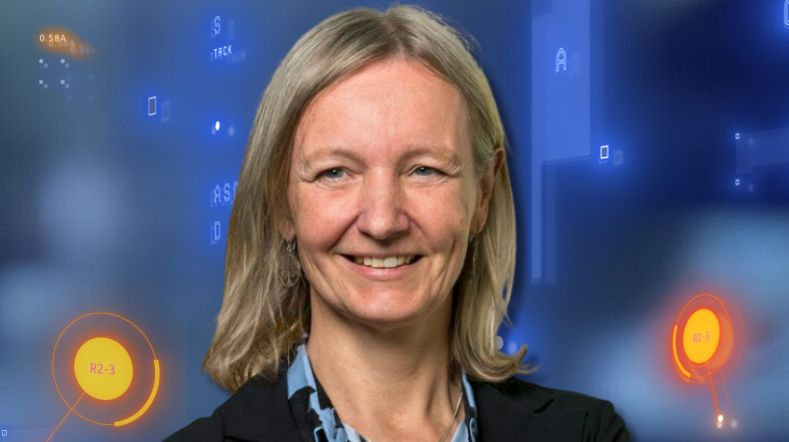
How 5G network slicing will make our traffic cleaner, more efficient and safer
5G will contribute to more efficient, cleaner and safer mobility, but only if we can use 5G’s full potential through network slicing. TNO and its partners have successfully demonstrated that this technology can provide reliable data flows for tomorrow’s mobility applications.
Faster, more efficient, and more reliable
The 5G mobile network will help us find solutions for major societal challenges, including the mobility transition. Peter-Paul Schackmann, Project leader connected mobility at TNO: “5G enables connected and automated driving, making our traffic considerably safer, cleaner and more efficient. For example, thanks to 5G, governments and road authorities can optimally manage traffic flows with dynamic traffic management systems, using the real-time data exchanged between vehicles and their environment.” A promising future, but only if we unleash the full potential of 5G, and for that we need one key technology: network slicing.
Safety-critical data
“For self-driving and connected vehicles, a fast, reliable data exchange between vehicles and their environment is of great importance,” Schackmann emphasizes. “The high bandwidth and low latency (delay in data transfer, ed.) of 5G can only be used in practice thanks to slicing.” With this technology you can separate different data streams, also called 'slices'. By assigning a priority to each slice, you guarantee the quality of important data streams. Schackmann: “Think of location data or warnings to other road users. These are safety-critical data streams, which should not be disrupted by other, less important data traffic, like streaming a movie.” With network slicing, these automotive applications benefit from their own guaranteed capacity and quality, just like dedicated networks. In reality, slicing uses a normal cellular network for general purposes.
For self-driving and connected vehicles, a fast, reliable data exchange between vehicles and their environment is of great importance
Perfectly reliable
Can mobile operators use network slicing to fulfil the challenging network requirements for reliable automotive applications? To answer this question, TNO was one of the very first parties to test its own advanced 5G 'stand-alone' (SA) network at the Automotive Campus in Helmond. In contrast to a 'non-standalone' (NSA) network, the entire SA infrastructure is designed to fully benefit from the possibilities of 5G. For the tests TNO has deployed its own 5G transmission tower and 5G core network. Pieter Nooren, Senior Scientist Networks at TNO: “We have built a flexible 5G test infrastructure to perform these types of tests. We combine core networks from Open5GS, Amarisoft and Fraunhofer with our Ericsson radio network and several 5G modems from Fibocom, Quectel and Netgear. This way we can always make the best working combination of hardware and software.” The slice tests were performed for extended sensor applications, where vehicles exchange real-time information with the environment about their position and speed and that of other road users. Measurements in the living lab showed that the slice operates completely reliably, even if many heavy data consumers and producers are active in the same mobile network. Even more challenging trials with remote-controlled vehicles were completed successfully. Schackmann: “We have also demonstrated that slicing works perfectly across multiple mobile networks.”
Can mobile operators use network slicing to fulfill the challenging network requirements for reliable automotive applications?
Promising applications
The network slicing tests in Helmond will ultimately have a significant impact on the entire mobility sector and all parties involved, Schackmann outlines. “The European Green Deal dictates firm targets for sustainable and smart mobility, which we can only achieve if we find mobility solutions that are sustainable, smart and future-proof. For governments and road authorities, slicing technology is an important building block for designing robust and safe traffic systems. For the automotive industry, slicing is a precondition for staying ahead of the game in connected and connected automated driving, to make our vehicles safer, greener and more efficient. And for the ICT industry, slicing will enable new promising business models, with ground-breaking applications for future wireless network technologies – within the automotive industry, but also beyond.”
Implementing innovation
Even though the technology appears to be successful and the future prospects look promising, there are still the necessary steps to be taken for a European or even national implementation. A wide variety of mobile operators and networks, high demands on network robustness, complicated legislation, and a great number of stakeholders, make these transition paths challenging. But it’s exactly these complex strategic issues in which our knowledge and experience is of great added value, recognizes Peter-Paul Schackmann. “At TNO, we like to take the lead and help our partners not only with hands-on and beyond-state-of the art technological know-how, but also with reliable roadmaps and models for smart and connected mobility. We look forward to meeting stakeholders from governments, road authorities, the automotive and ICT industry, to jointly take the next steps towards tomorrow’s mobility solutions.”
Get inspired
Digitalisation and sustainability: how AI can help


Time setter story: Kallol Das


Digital Product Passport


Time setter story: Annemieke Kips


Time setter story: Belma Turkovic



